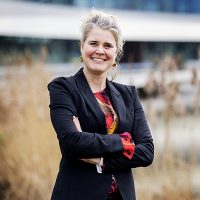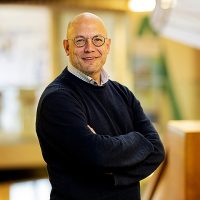Disaster risk reduction in practice: field-based experiences from experts
Today, on International Day for Disaster Risk Reduction, we reflect on the urgent call to shift from reactive responses to proactive resilience. The theme for 2025: “Fund resilience, not disasters” resonates with our work at Deltares. But what does disaster risk reduction look like in practice? We asked several Deltares colleagues to share their experiences from the field, revealing the human side of disaster risk reduction and the science behind it.

Modeling for the most vulnerable

For Taiwo Ogunwumi, one of the biggest challenges is the difficulty of proactive investment in resilience. “Resources are often allocated only after disasters occur,” he explains. “Early warning systems frequently fail to reach the most vulnerable communities.”
In 2020, Taiwo visited Borno State, Nigeria, where he worked in refugee camps affected by both insurgency and recurring floods. “The compounded vulnerabilities of women and children were heartbreaking,” he recalls. His expertise in flood modeling and disaster risk assessment helped develop models for over 15 camps, providing actionable insights for humanitarian organisations and government agencies. “It reinforced the importance of inclusive early warning systems and preparedness measures.”
Bridging science and society

Lakshman Srikanth sees disaster risk management as “thankless work, but more urgent than ever.” He emphasises that knowing the risk is only the beginning, the real challenge lies in translating technical knowledge into meaningful action. "Disaster risk assessment is not the same as disaster risk management — knowing the risk is only one of the priorities of the Sendai Framework. The harder task lies in bridging technical understanding with lived realities. We need more integration, because disasters don’t happen in silos — a drought, for example, doesn’t just impact water, but also health, livestock, livelihoods, and exacerbates inequities.
His journey began in India, where he lived for 35 years. A visit to Uttarakhand in 2014, a year after the devastating Kedarnath floods, sparked a lifelong commitment to resilience. "Working with diverse stakeholders across the country on projects that reveal both the nuances of development (and the lack thereof) and the intricate linkages between vulnerability and resilience has changed me in a fundamental way - turning disaster risk reduction from a profession into a lifelong purpose."
"I connect science, systems, and society. My work focuses on helping governments and organisations move from data to decision, and from risk knowledge to resilience practice." From developing disaster management plans for Himalayan railway links to co-creating early warning systems with women ragpickers in informal settlements, Lakshman’s work spans the full disaster risk management cycle. “Vulnerability and resilience co-exist,” he says. “We need both science and empathy for meaningful change.”
Flash floods and fast action

In some cases, preventive measures aren’t feasible, especially during extreme events. Ruben Imhoff highlights Dire Dawa, Ethiopia, a city prone to flash floods triggered by storms in surrounding mountains. “People in town often have no warning whatsoever,” he explains.
In 2024, Ruben joined forces with HKV, Red Cross 510, TAHMO, and ICPAC to develop a flash flood early warning system using satellite-based rainfall forecasting and rapid flood models. “Effective early warning and action protocols can save lives,” he says. “It’s about making the invisible visible, before disaster strikes.”
Understanding risk interactions

Philip Ward focuses on the complexity of multi-hazard interactions, how different risks overlap and affect people, sectors, and regions in unexpected ways. “Understanding these interactions is key to preparing for future disasters,” he says.
In 2024, Philip visited Japan as part of the MYRIAD-EU project and was impressed by the country’s disaster awareness infrastructure. “Information in hotel rooms, multilingual signage, clearly marked evacuation routes, it was inspiring.” At the GFDRR Understanding Risk Forum in Himeji City, he led a workshop on integrating climate adaptation and disaster risk reduction. “It was great to exchange experiences between people from very different geographical and cultural backgrounds.”
Building resilience together
At Deltares, we believe that resilience is not just a technical goal, it’s a human imperative. We combine structural and nature-based solutions, advanced modeling, and participatory approaches to help communities and governments prepare for and reduce disaster risks. Whether it’s modeling floods in refugee camps, co-developing early warning systems with local communities, or integrating risk knowledge into policy, our work is driven by a commitment to inclusive, science-based solutions.
On this International Day for Disaster Risk Reduction, we reaffirm our mission to help societies worldwide anticipate, adapt, and thrive, not just survive.


